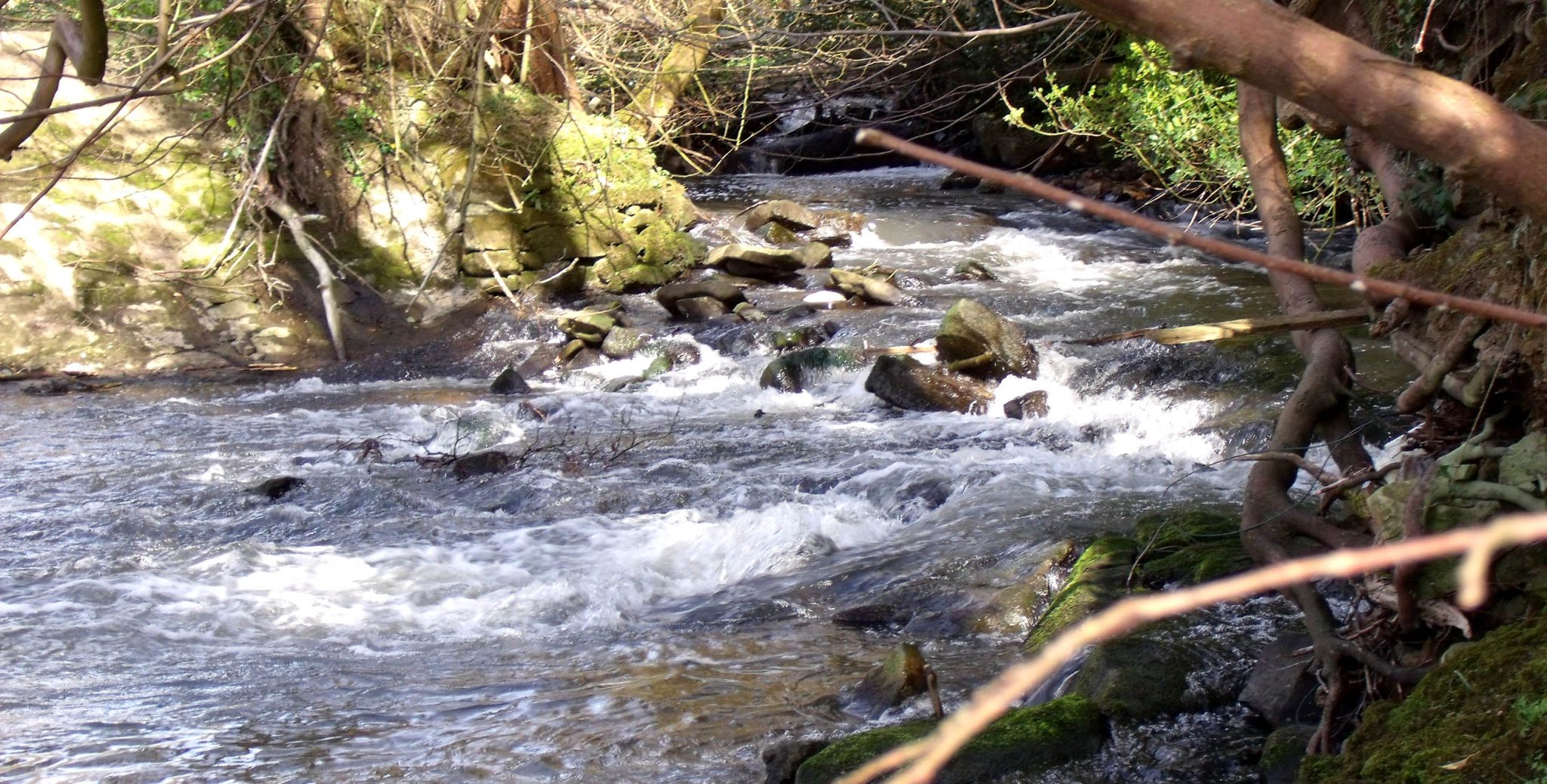September 2023
Rising on the Clwydian Hills, the Afon Alyn is the longest of the river Dee’s tributaries. Its Welsh name is Alun, which translates as “meandering one.”
From source, the Alyn at first flows north through the villages of Llandegla, Llanarnam-yn-lal and the wonderfully named Loggerheads, before turning east and then southeast through Mold, Buckley, Llay, Gresford and Rossett. Always remaining on the Welsh side of the border, after nearly forty miles the river joins the Dee northeast of Wrexham.
The Alyn has a rich industrial history. Over 30 mills have operated along its length at various points in time with mining for coal, lead, sand and gravel also leaving its mark on the catchment.

A river with an industrial past….
Between the villages of Loggerheads and Rhydymwyn (where the German composer Mendelssohn stayed and composed “The Rivulet” in 1829) the river flows through the Alyn Gorge and a section of carboniferous limestone, giving the water unusually high pH levels for this part of Wales. Naturally formed “swallow holes” are common in this section of the river. During periods of low rainfall, the Alyn’s water disappears into these holes and caves formed in the underlying limestone, often leaving the river dry.
Exacerbating the water loss is the river’s mining past, which has exposed and interconnected cavities in the limestone. Unsuccessful attempts were made at sealing swallow holes to protect mines from flooding but in the late 1800s, construction began of a tunnel to drain underground water. To this day, the Milwr Tunnel continues to take the Alyn’s water from near Loggerheads, emptying it directly into the Dee estuary at Bagillt 10 miles to the north.
A “swallow hole” in the bed of the Alyn (photo: Howard Stevens).
Downloadable Afon Alyn factsheet.
The drying-up of this section of the Alyn seems not to be just a post-industrialisation issue, however. Local folklore has it that a giant, when set on fire by St Cynhafal, jumped into the Alyn to extinguish the flames, turning the river’s water to steam and the flow only restored intermittently since.
The Alyn has been affected by high as well as low flows. In “The Alyn Anglers, A Century of Rossett and Gresford Flyfishers” Paul Leng refers to the river’s once abundant beds of rannunculus that were decimated by severe floods in the early 2000s. He also mentions the angling club’s strenuous efforts to re-establish the important plant, which were starting to pay dividends at the time of his writing in 2006. Unfortunately, all the new growth was reported as eaten by cygnets in 2019.
In Pete Evans’s 2017 book “Resurrection River, a 4,000-year walk along the river Alun”, the author mentions a well in Llandegla, the first village the Alyn flows through, that was reputed to cure epilepsy. After washing in its water and throwing in four pence, sufferers needed to walk around the well three times and then around the church, all the while holding a chicken and reciting the Lord’s Prayer before spending the night under the communion table with a bible on their head. The next morning the chicken had to be left behind, along with another six pence, but a cure would only happen if the chicken had died during all this. Apparently, long pins have been found in the well, presumably to help ensure the completion of this process.
Nowadays, the Alyn’s water varies in quality, with the upper reaches in “good status” but moderate further downstream. Its two major tributaries, the Terrig & Cegidog, are good. The principal pressures on water quality are diffuse pollution from dairy and beef farming, along with effluent from sewage treatment works. The river also suffers from bank side erosion, historic channel modification and disconnected floodplains.
Correcting these issues for the Alyn has been the focus of restoration work by Welsh Dee Trust who have completed 3.5 km of habitat restoration since 2020 with another 1.7km planned for delivery by the end of 2023. They have also worked with 37 farms within the catchment to reduce agricultural pollution, monitoring eight sites for phosphate pollution and seven monitored for invertebrates twice a year by citizen scientists to measure the impact of their work.
References:
“Resurrection River, a 4,000-year walk along the river Alun.“ Pete Evans, 2017.
“The River Alyn, A Brief Review of Past Present and Future.“ Howard Stevens, President Rossett & Gresford Flyfishers, 2019.
“The Alyn Anglers, A Century of Rossett and Gresford Flyfishers“ Paul Leng 2006.
Our thanks also to Mark Pierce, trustee of Welsh Dee Trust and committee member of Rossett and Gresford Flyfishers for help with information and photos.


